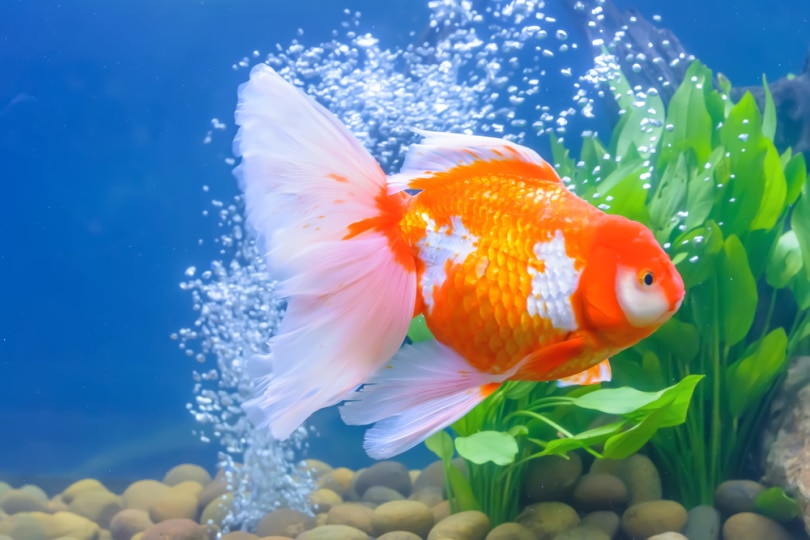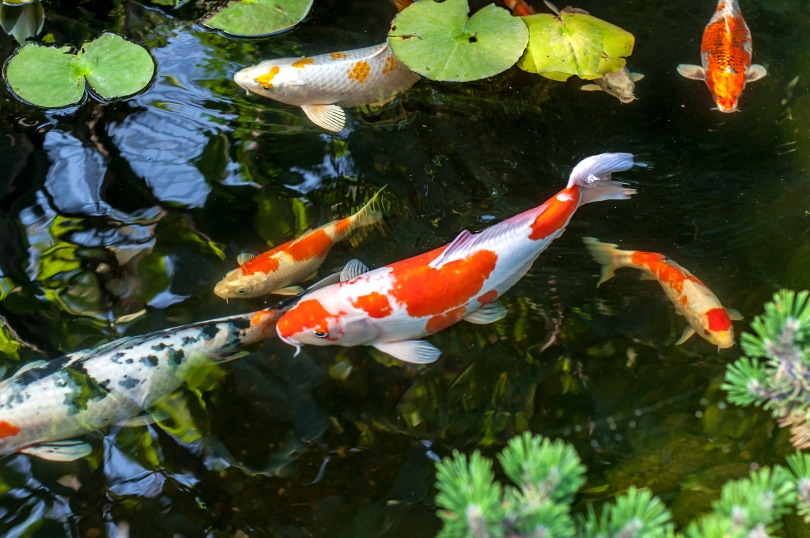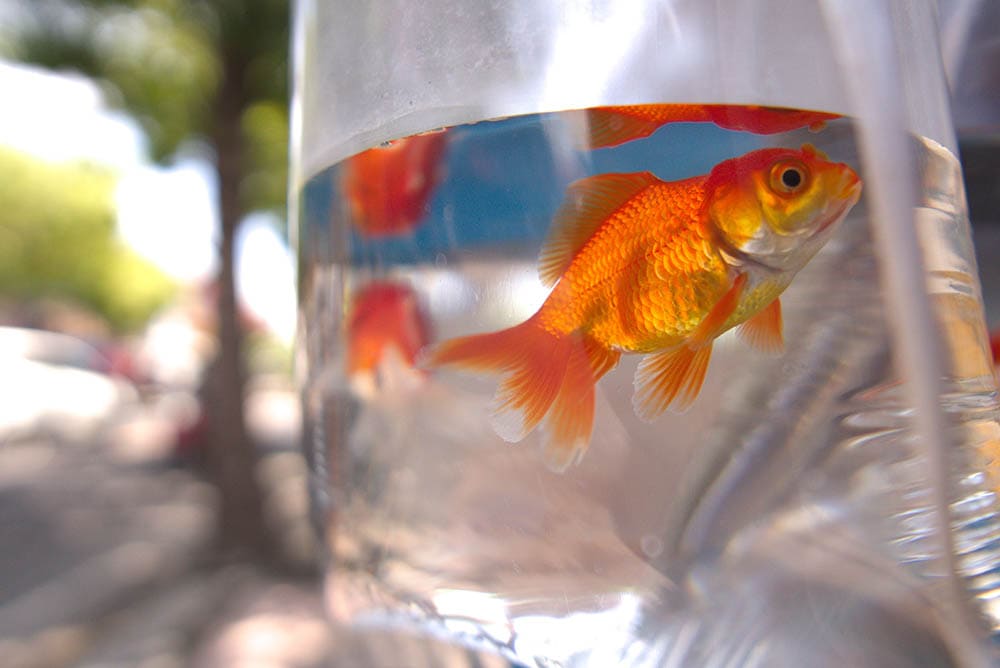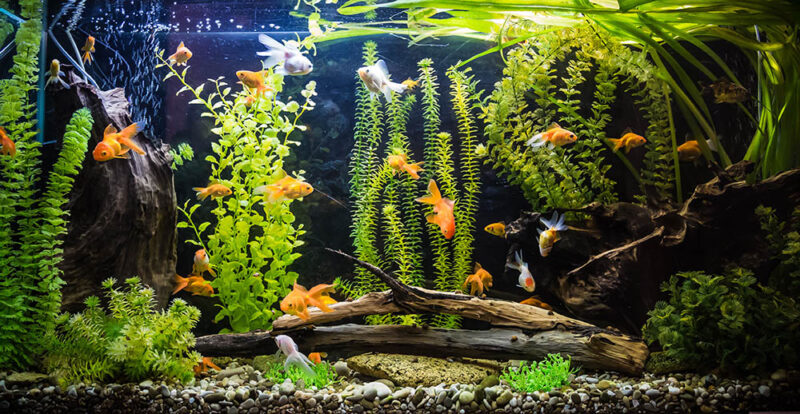
If you’re new to keeping fish, you may be wondering what kind of aquatic plants to add to your aquarium. Luckily, there are plenty of choices available for new fishkeepers, including floating aquarium plants! Floating aquarium plants offer a variety of benefits for your tank, such as providing shelter and food for fish, adding beauty to your tank, and helping to reduce noise levels.
If you’re considering getting a new fish, or are just starting out with fish keeping, then you may be wondering what kind of floating aquarium plants to get. There are a lot of choices available, and each has its own benefits. We’re going to run through the list of the best floating aquarium plants you can buy online, plus answer all the questions you have on finding the perfect plants for your aquarium.
A Quick Comparison of Our Winners (2024)
| Image | Product | Details | ||
|---|---|---|---|---|
| Best Overall |

|
Java Moss |
|
Check Price |
| Best Value |

|
Amazon Frogbit (Limnobium Laevigatum) |
|
Check Price |
| Premium Choice |

|
Water Spangles |
|
Check Price |

|
Hornwort Bunch Plants (Ceratophyllum Demersum) |
|
Check Price | |

|
200 Live Duckweed Plants (Lemina Minor) |
|
Check Price |
The 6 Best Floating Aquarium Plants for New Fishkeepers
1. Java Moss – Best Overall
| Plant type: | Moss |
| Number of pieces: | 25 |
| Suitable for: | Freshwater tanks |
| Care level: | Minimal |
Aquatic plants are a great way to add some life to your aquarium and provide a new home for your fish. Java moss is our favorite floating aquarium plant for new fishkeepers overall because it is easy to care for and grows quickly. It can be attached to rocks or driftwood in the aquarium, and it will help to purify the water. It also gives your fish a place to hide. Java moss is easy to keep in any freshwater aquarium, and it doesn’t need special lighting, plus grows at a manageable pace. You can either root this plant or let it float. Java moss is also a good choice for beginners because it is hardy and can withstand a variety of conditions.
Biofilm, a thin, slimy layer of bacteria found on moss, is what attaches it to surfaces because of this, Java moss can even grow along the glass walls of your tank. Before placing the moss in your tank, you will need to break it up into smaller pieces and clean it thoroughly.
2. Amazon Frogbit (Limnobium Laevigatum) – Best Value
| Plant type: | Spongeplant |
| Number of pieces: | 12 |
| Suitable for: | Freshwater tanks |
| Care level: | Minimal |
One type of aquatic plant that is popular among new fishkeepers is the Amazon frogbit. This plant is easy to care for and grows quickly, making it a great choice for beginners. The Amazon frogbit is the best floating aquarium plant for new fishkeepers for the money because it is easy to care for and it floats on the surface of the water, which makes it a great hiding place for fish. It also helps to keep the water clean by absorbing harmful nutrients. A frogbit’s roots are long and branching, while its leaves are broad and form large rosettes. Hobbyists are attracted to their length because it gives foraging fish room to roam and they block out
a substantial amount of light. Betta fish, which enjoy lounging in darker areas, may benefit from this. Lower-dwelling plants that require sunlight, however, may encounter difficulties.
Housing a goldfish isn't as simple as buying a bowl. If you're a new or experienced goldfish keeper who wants to get the setup right for your goldfish family, check out the best-selling book, The Truth About Goldfish, on Amazon.
It covers all you need to know about the ideal tank setup, tank size, substrate, ornaments, plants, and so much more!
3. Water Spangles – Premium Choice
| Plant type: | Fern |
| Number of pieces: | 12 |
| Suitable for: | Freshwater tanks |
| Care level: | Minimal |
Water spangles are a type of aquatic plant that does not require soil to grow. This makes them a good choice for new fishkeepers who are not yet experienced in caring for plants. Water spangles can be attached to rocks or other objects in the aquarium using their roots, or they can be left to float freely. They require little maintenance and will thrive in most water conditions. As a hardy species of floating plant, it can survive in various water conditions.
It has a strong ability to block sunlight and your fish will enjoy the shade, giving them somewhere to hide. As a bio-filter, water spangles can also help keep algae blooms down by feeding on nutrients in the water. You will need to manage this plant to limit overgrowth, and you’ll need a light in your tank to grow this plant efficiently.
4. Hornwort Bunch Plants (Ceratophyllum Demersum)
| Plant type: | Ceratophyllum |
| Number of pieces: | Approximately 6 |
| Suitable for: | Freshwater tanks |
| Care level: | Minimal |
The hornwort plant is another popular choice. Hornworts are native to Britain and able to tolerate a wide range of water conditions while still looking beautiful. Dark green in color, they form densely packed structures where fish can hide and forage. In addition, hornworts can be planted at the bottom of your tank or left to float freely, growing rapidly. Hornwort can grow up to 6 feet long once fully mature, so pruning is often required.
Hornwort also helps to improve your water. By oxygenating the water, hornworts remove excess nutrients and harmful waste products, such as nitrate, and can also help neutralize algae. Sometimes this plant comes with unwanted extras—such as snails and worms. Be sure to quarantine the plant for up to a month before moving it to your tank.
5. Live Duckweed Plants (Lemina Minor)
| Plant type: | Lemnoideae |
| Number of pieces: | 200 |
| Suitable for: | Freshwater tanks |
| Care level: | Minimal |
Aquatic plants provide many benefits to both new and experienced fishkeepers. Floating aquarium plants, such as duckweed, are a great addition for new fishkeepers because they are easy to care for and help to oxygenate the water. Duckweed can be added to any aquarium, regardless of size, and will quickly become established. It is a great source of food for fish and helps to control algae growth.
Some plants, like duckweed, are free-floating and do not require any anchoring. This makes them an ideal choice for new fishkeepers, who may not be familiar with the care of live plants. Duckweed can quickly cover the surface of an aquarium so make sure to remove excess vegetation regularly. This is another plant that often comes with extra critters and so needs to be cleaned and quarantined before adding to your tank.
6. Cabomba Caroliniana
| Plant type: | Aquatic perennial herbaceous plant |
| Number of pieces: | 5 to 7 |
| Suitable for: | Freshwater tanks |
| Care level: | Minimal |
Cabomba caroliniana, also known as fanwort, is an aquatic plant that can be found in slow-moving and standing waters in the wild. This plant is popular among aquarium enthusiasts for its ability to thrive in a wide range of water conditions, including low light levels and hard water. It is also one of the few aquatic plants that can actually float, making it a great choice for new fishkeepers who are still working on establishing the perfect aquarium environment.
It is not recommended that these plants be repeatedly cut or transplanted. It is usually a sign of poor water conditions or CO2 deficiency if leaves are falling off of the plant.
Buyer’s Guide: How to Select the Best Floating Aquarium Plants for New Fishkeepers
Should I Buy Live or Artificial Plants?
Aquarium plants can be found in either live or artificial forms. Live plants come from a natural body of water and must be submerged in water to remain alive. Artificial plants, on the other hand, are made of materials that will not decompose in water and can be placed anywhere in the aquarium. Many new fishkeepers choose to start with artificial plants because they are easier to care for and do not require any additional light.
Maintenance & Care
Live aquarium plants can be an important part of any fish tank, providing decoration, a place for fish to hide, and helping maintain the health of the water and tank. However, not all aquarium plants are easy to care for, and new fishkeepers may not be familiar with the different types of plants available. Floating plants are popular among new fishkeepers because they are easy to care for and don’t require any special tank conditions.
Cover & Shade
Floating aquarium plants are a great way to help new fish feel more comfortable in their new environment. The plants provide cover and shade, which can make the fish feel less exposed and help to reduce stress. In addition, the plants can also provide a place for the fish to hide if they need to escape from other fish or potential predators.
Stabilizing Water Chemistry
Many new fishkeepers find themselves with a tank full of fish, but no plants. Aquarium plants are important for a number of reasons—they provide shelter and security for the fish, stabilize water chemistry, and improve the overall aesthetics of the tank. There are a number of different types of aquarium plants available, but some are better suited for beginners than others.
For new fishkeepers, floating aquarium plants can be a great way to help stabilize water chemistry, help to oxygenate the water, and reduce the amount of waste build-up produced by the fish.

Supplement Your Fish’s Diet
Aquarium plants are a great way to supplement your fish’s diet. They provide a natural, self-generating food source. A second, automated source of food reduces the risk of your fish being underfed when you add floating plants to your tank. In addition, this food source provides nutrients that synthetic food may not, contributing to the balance in your fish’s diet.
Create a Natural Look for Your Aquarium
Floating plants are beautiful to look at, aside from their health benefits. Natural and healthy floating plants improve the appearance and feel of any aquarium. As well as being a great design feature, the natural environment of your tank will be beneficial to your fish friends. Their adaptation to these conditions makes replicating their habitat beneficial to their overall health.
In Conclusion
In conclusion, aquarium plants can be a great addition to any fish tank, but particularly for new fishkeepers. Floating plants are a great way to add some interest and cover your tank, while also providing your fish with a place to hide.
Java moss is our favorite because it’s so easy to grow and maintain. We also love Amazon Frogbit as it creates shade and dark moody areas within the tank. Water Spangles are also an awesome choice—even though they can easily become overabundant in your aquarium.
If you’re looking for an easy way to add some plants to your tank, floating aquarium plants are a great option and we hope you’ve found your preferred purchase on our list.
Featured Image Credit: Huy Phan, Unsplash

















